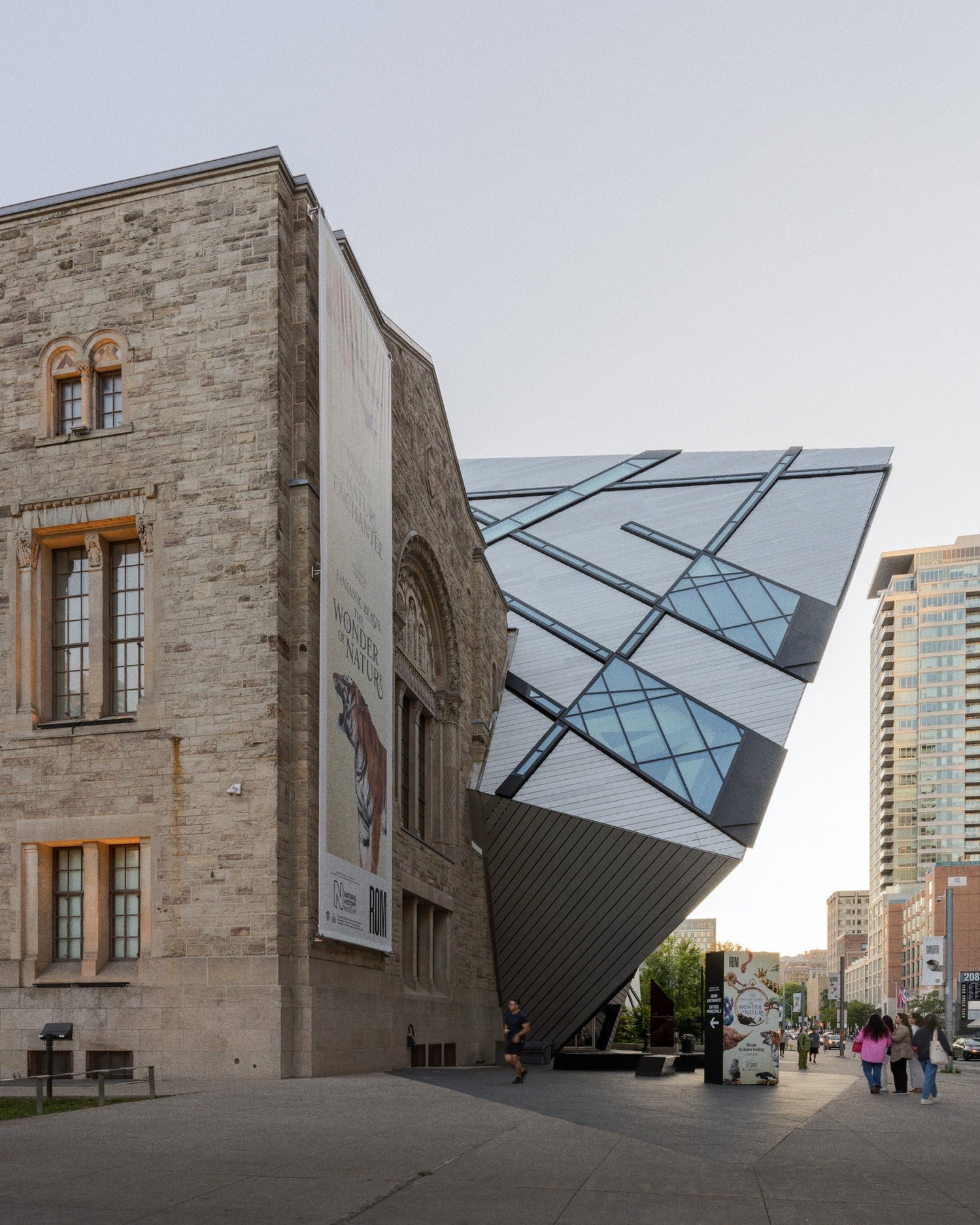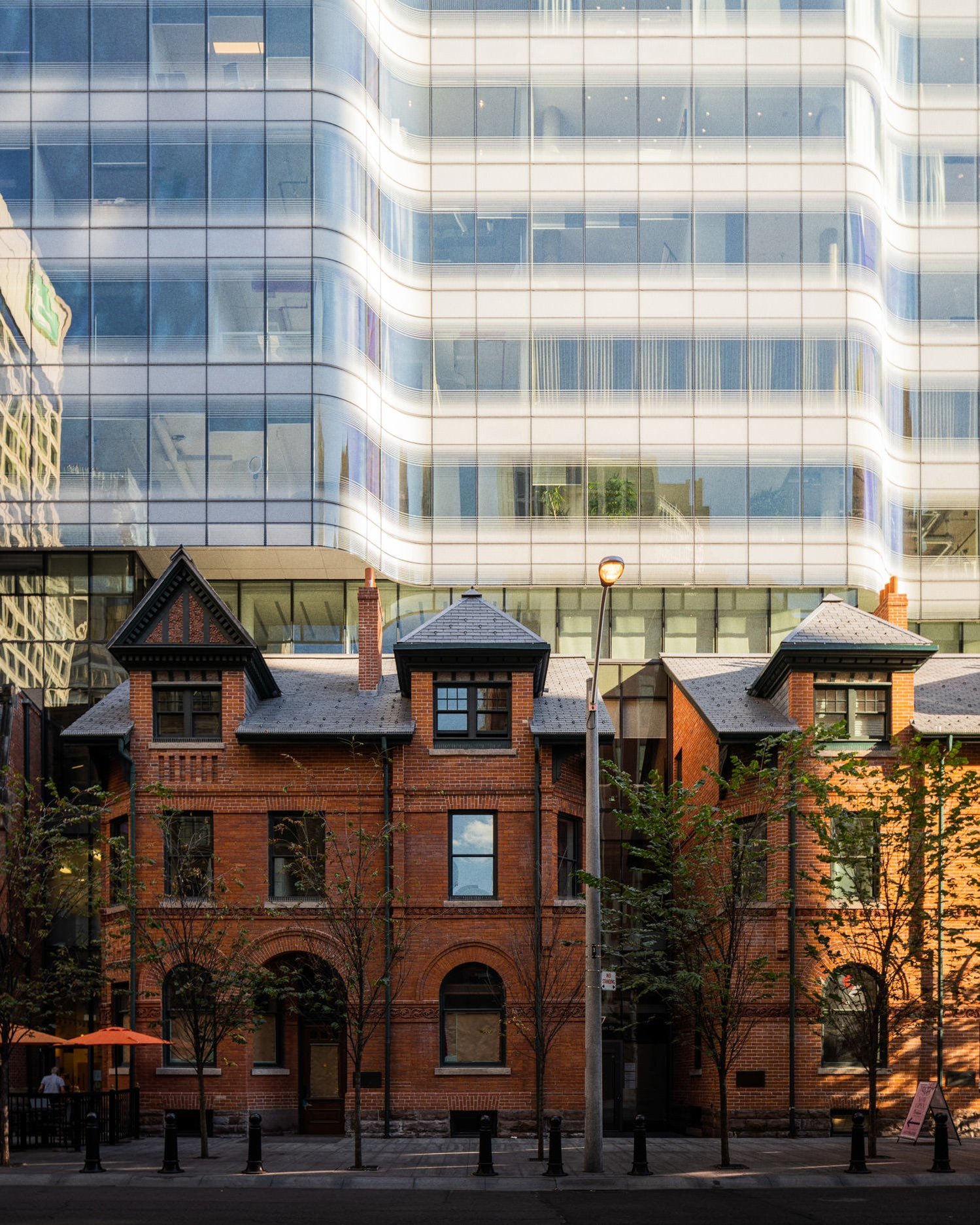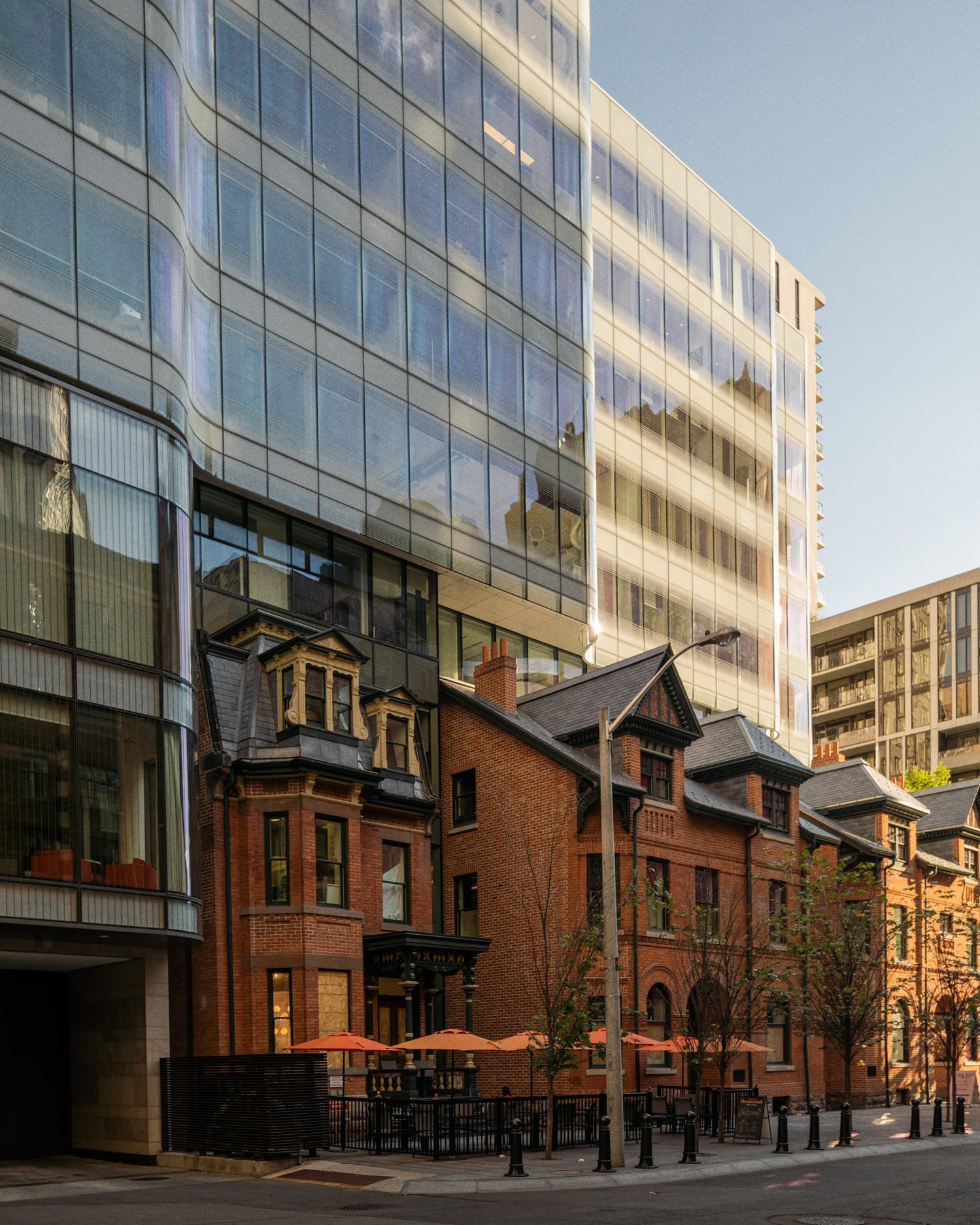Preserving And Celebrating
October 16, 2023Examples Of Weaving Together Heritage And Modern Architecture To Meet The Evolving Needs Of Toronto’s City Center
The Ontario Heritage Act was founded in 1975 with the goal of preserving and celebrating history. The act allows the province to designate heritage buildings that are protected from demolition. In this photo essay, we explore two sites that are protected under this act, and how the heritage buildings were woven together with modern architecture to meet needs of expansion. The two projects are located 450 meters from one another in Downtown Toronto’s Yorkville and Queen’s Park neighbourhoods. The photos below offer new perspectives on the structures as isolated subjects and on their relationship to their surroundings.
The Royal Ontario Museum
The Royal Ontario Museum originally opened its doors in 1914. In 1933 the museum expanded to include a wing along Queen’s Park. Both buildings are excellent examples of Canada’s 20th century Romanesque style and in 1973 became protected heritage sites. In 1984 another extension was added along Bloor Street, but in 2003 the majority of this was demolished to make way for the iconic structure we see today.
Famed architect Daniel Libeskind was inspired by the ROM’s gem and mineral collection when asked to design a new wing for the museum that would include a new main entrance and home for the dinosaur exhibit. The deconstructed crystalline form is a steel framed structure, cladded in 25% glass and 75% aluminum that captures the attention of anyone who walks past.
The new structure’s canted walls do not touch the existing heritage building, instead they envelope a series of passageways that connect the new and heritage buildings. Construction of this extension was completed in 2007 and named the Michael Lee-Chin Crystal.
7 St. Thomas Street
Built in 1927, this row of charming Victorian inspired Bay and Gables houses were apartments for University of Toronto students. In 1973 the City of Toronto adopted these houses to preserve their story, and in 2008 they became a protected heritage site. In recent years this area has seen a massive surge of development, and the need for growth was clear.
The final design blends distinctly Victorian and Contemporary materials to create a unified work. The contrast between the solid red brick of the heritage homes and the translucency of the glass tower highlights both typologies. The curves of the floating tower act as a perfect backdrop to the angular Victorian storefronts.
These two properties have positively transformed the Queen’s Park and Yorkville neighbourhoods all while maintaining and elevating the histories from the city’s past. They stand as compelling examples showing the value of the Ontario Heritage Act. By preserving historical buildings and merging them with modern architecture; we can create an opportunity to celebrate their contrasts. Tourists and locals alike benefit from this renewed sense of awe and wonder as our cities evolve.
Words by:
Alan Chakota and Emilia Majerus













